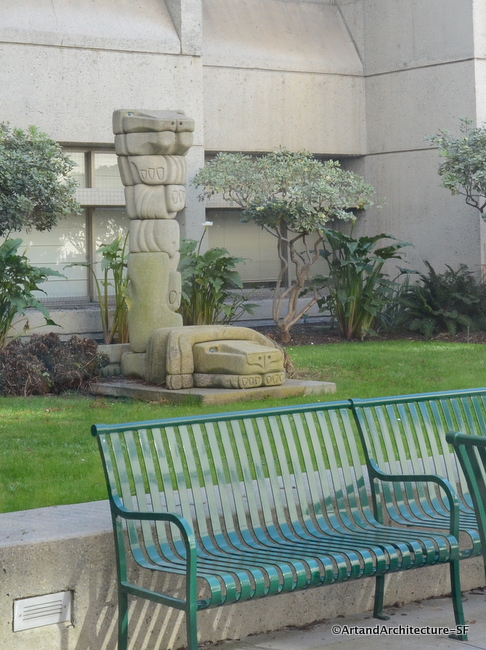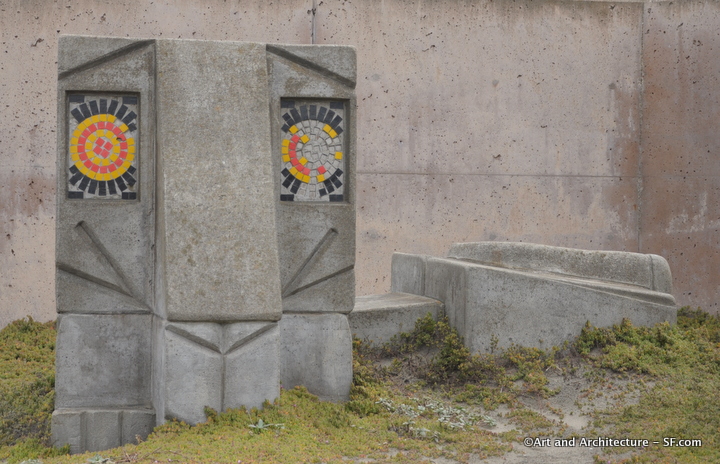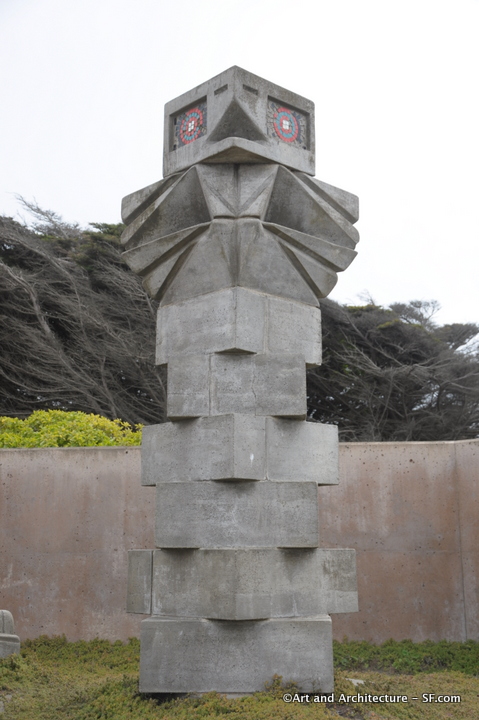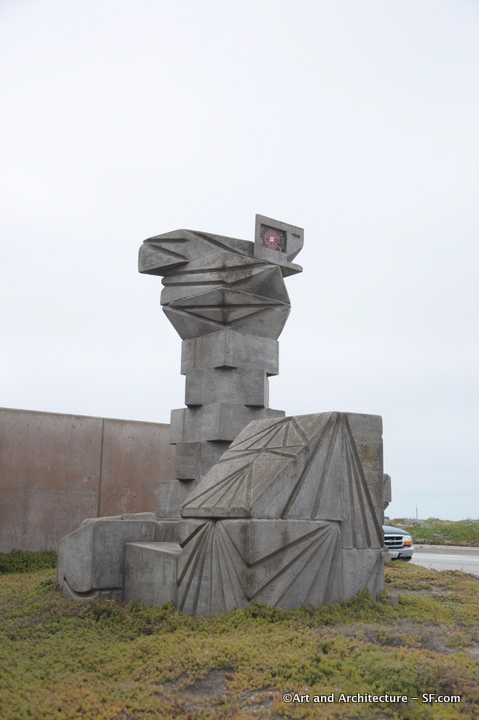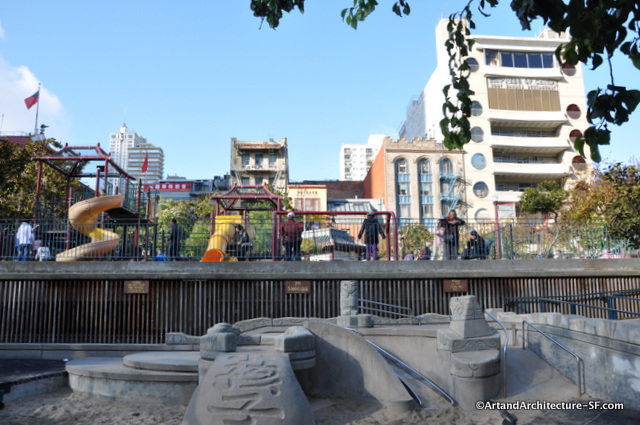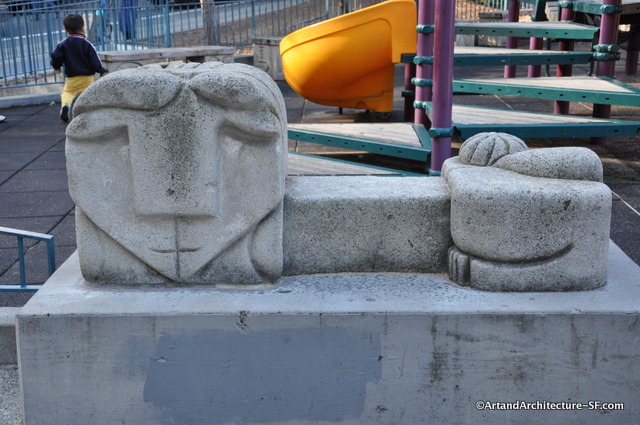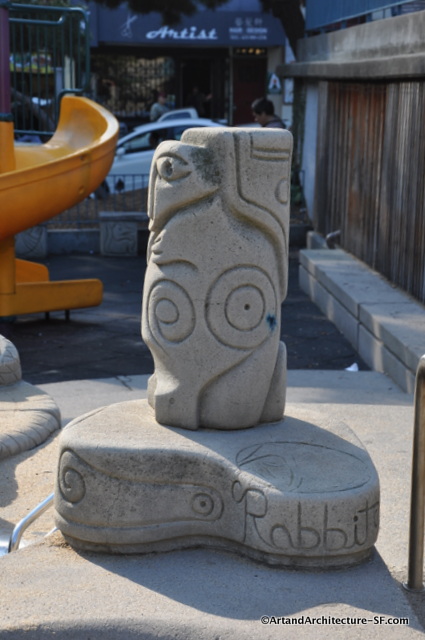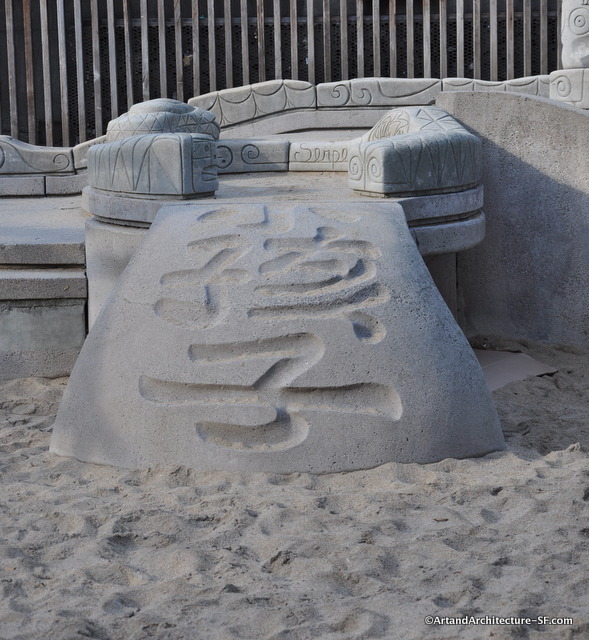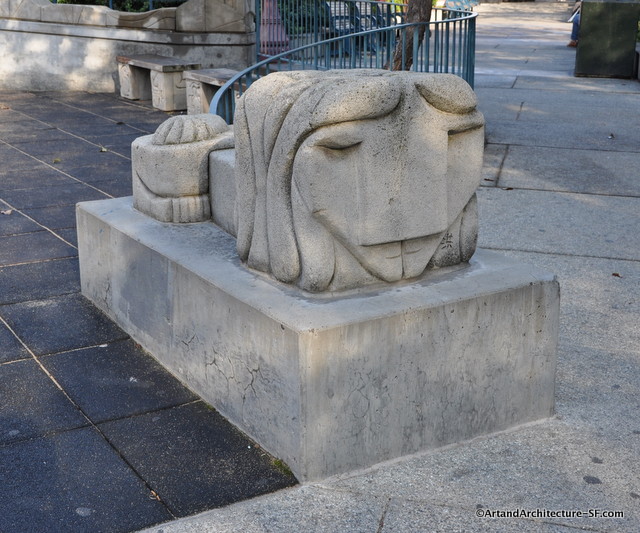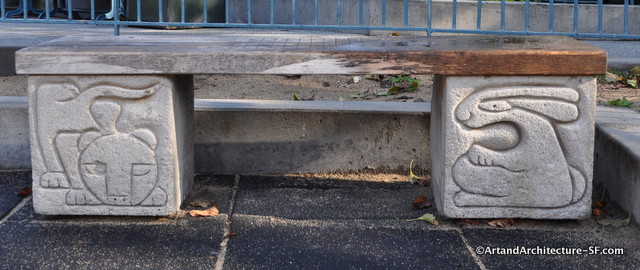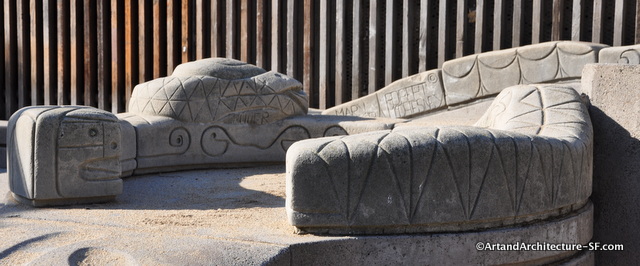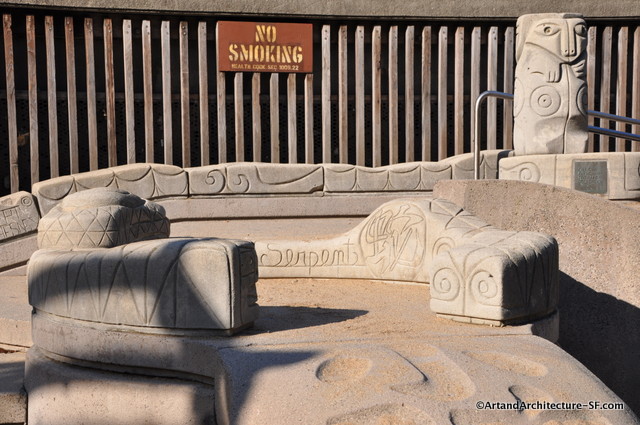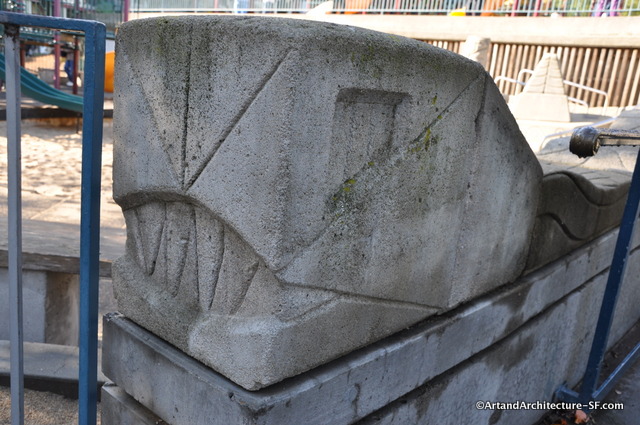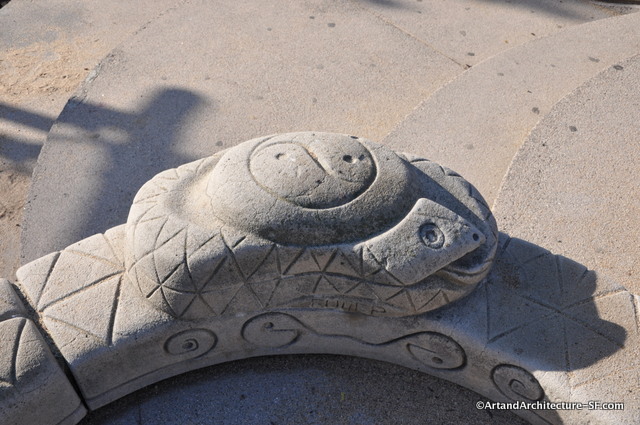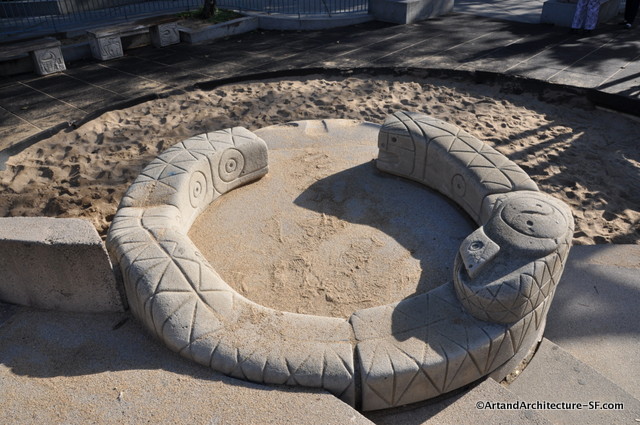1001 Potrero
San Francisco General Hospital
So much of the collection paid for by the San Francisco Art Commission is not readily available to the general public. This piece is no exception. On the patio of the 3rd floor of SFGH, the doors were locked, however, you can see the sculpture through the window.
Titled Dos Liones, this sculpture, done in 1974, is by Mary Fuller. Mary Fuller has many pieces of public art work around the San Francisco Bay Area.
Mary Fuller was born in Wichita, Kansas on October 20, 1922. Creating totemic figures, playful animals and dancing goddesses (to honor older women and their fiery spirit), she is also an author with one major art historical work, three mystery novels, and a host of short fiction and art reviews to her credit. Fullers family moved fom Kansas to California in 1924.
She grew up in the farm country of California’s Central Valley. She studied philosophy and literature at the University of California, Berkeley, in the early 1940’s, working as a welder in the Richmond shipyards in 1943 during World War II.
Mostly a self-taught artist, she apprenticed in ceramics at the California Faience Company in the 1940s and began to exhibit in 1947, wining first prize at the 6th and 8th Annual Pacific Coast Ceramic Show, 1947 and 1949. In 1949 she married the painter Robert McChesney, and many of her subsequent writings are published under the “Mary McChesney” name. As a mystery writer in the 1950s, however, she used the pseudonym “Joe Rayter” to publish The Victim Was Important; Asking for Trouble and Stab in the Dark. Fuller began to construct concrete sculpture in the 1950s while pursuing her writing career. She free-lanced for major art journals, including Art in America and Art-forum, throughout the 1960s, while also conducting research on 1930s Works Progress Administration artists for the Archives of American Art. A Ford Foundation fellow in 1965, she conducted research on modernist art in the Bay Area that culminated in A Period of Exploration, San Francisco 1945-1950, termed one of the key documentary works in the field of modern California art history.
Beginning in 1974, she was awarded the first of many public art commissions, including Dos Leones.
The above is excerpted from Women Artists of the American West by Susan Ressler.
